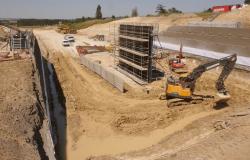The recent financial performance of Marathon Petroleum Corporation (MPC), a leading independent refiner in the United States, highlights a strategy for optimal management of its refining capacities. By focusing on increased refinery throughput and a high utilization rate, the company was able to overcome the challenges of a changing sector while taking advantage of market dynamics.
Increasing Refinery Throughput: A Pillar of Profitability
Increasing refinery throughput, the volume of crude oil processed into petroleum products like gasoline and diesel, has been a key profitability lever for Marathon Petroleum. By increasing this throughput, MPC responds to a growing demand for refined products, particularly in a context of fluctuations in supply and prices. To achieve this increased throughput, Marathon exploited lower-cost sources of crude oil, thereby maximizing margins while remaining competitive in an ever-changing international market.
This volume strategy allows Marathon to capture market opportunities, especially when supply is limited and prices are attractive. By adjusting supply and responding quickly to changes in demand, the company ensures high profitability and resilience in the face of market instabilities.
High Utilization Rate: Optimization of Resources
In addition to the increased throughput, Marathon Petroleum posted some of the highest refinery utilization rates in the industry. This rate, representing the proportion of production capacities used, makes it possible to minimize downtime and optimize fixed costs by spreading them over a larger production volume. In an environment where margins are under pressure, an optimal utilization rate is crucial to maintaining competitive production costs.
Marathon has ensured this high rate through proactive maintenance and careful operations management. By anticipating maintenance needs and ensuring continuity of operations, the company limits costly interruptions. This proactive approach, combined with rigorous resource management, contributes to an improvement in net margins, strengthening investor confidence.
Market Context and Adaptation Strategies
Marathon Petroleum was able to take advantage of a favorable market context for refining margins, in an environment marked by supply disruptions and sanctions targeting certain oil producers. This situation led to an increase in the prices of refined products, from which Marathon was able to benefit while controlling its production costs. By diversifying its facilities and sources of raw materials, MPC positions itself in geographically advantageous markets and benefits from preferential rates based on regional variations in supply and demand.
With strategically distributed facilities, the company can quickly adjust production and take advantage of the most lucrative segments of the global market, strengthening its competitive position and financial results.
Future Challenges and Perspectives
Despite the encouraging financial results, Marathon Petroleum continues to face structural challenges. The company must adapt to increasing environmental regulations and pressures to reduce the carbon footprint of the refining sector. These requirements could force Marathon to invest in decarbonization technologies or sustainable infrastructure, which would weigh on margins in the short term.
Furthermore, the shift towards renewable energies and the decline in fossil fuel consumption represent a potential risk for the sector. Marathon Petroleum may need to consider investments in more sustainable energy solutions to diversify its portfolio and mitigate risks associated with dependence on hydrocarbons.
Thus, although Marathon Petroleum has been able to capitalize on its refining capacities and optimal management of its assets, the challenges of the future call for strategic adaptation in the face of energy transition and regulatory requirements.





